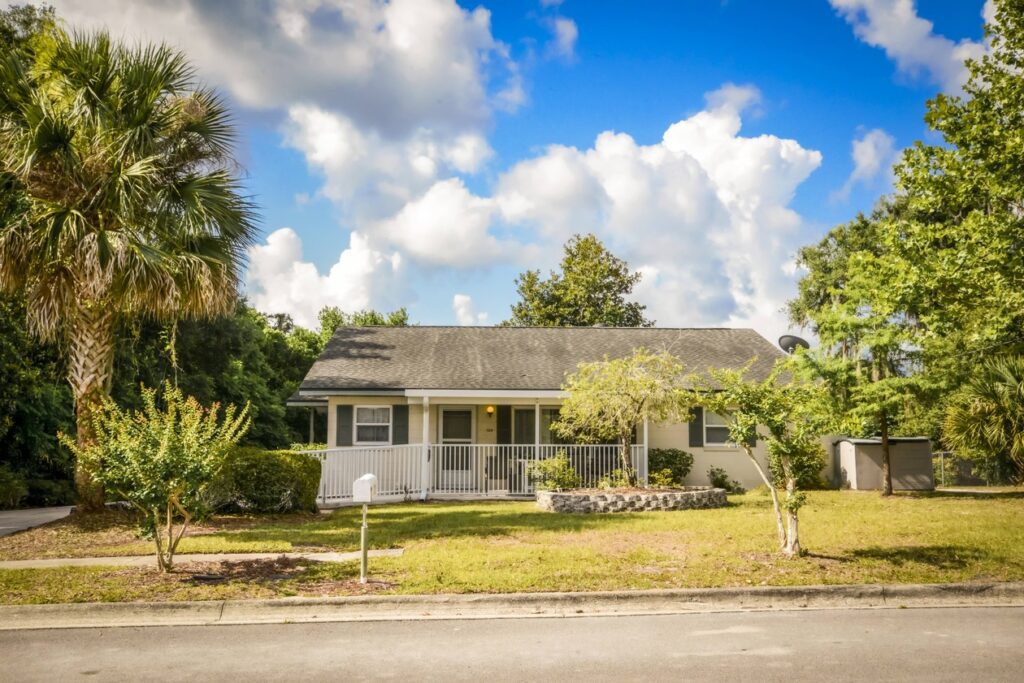Understanding what is a halfway house is crucial for people needing support and rehabilitation. By providing a structured and supportive environment, halfway homes can help residents overcome addiction, mental health issues, and other obstacles preventing them from living successful lives. In addition, halfway house residents are provided with job training, educational opportunities, and other resources to help them achieve their goals and transition back into society.
This article will provide a comprehensive overview of the concept and purpose of a sober living environment. We will explore the history of halfway houses, their work, and the benefits they provide to residents. Additionally, we will discuss the types of individuals who may benefit from residing in a sober home and what to look for when choosing a sober living house. By the end of this article, readers will have a clear understanding of the important role that sober living home plays in supporting and rehabilitating needy individuals and early recovery.
Halfway House Definition
Halfway houses are group homes that provide a structured and supportive living environment for individuals who are in recovery from addiction or alcoholism. These homes offer a range of services and support that help residents maintain sobriety and rebuild their lives.
Halfway House, also called a sober living facility, is where people recovering from addiction or substance abuse problems or who have just been released from prison can live in a safe and supportive environment. The members must follow the rules and regulations, attend therapy or support group meetings, and participate in community activities. The goal of a halfway house is to provide occupants with the necessary support and structure to transition back into society and to prevent them from returning to negative behaviors and habits.
Why is it called the halfway house?
To understand why halfway houses are called that way, we must go back to the 19th century. During this time, the prison system was very different from today. Prisons were overcrowded and lacked proper rehabilitation programs, and the focus was mainly on punishment rather than reform. As a result, many prisoners were released back into society without any support or resources to help them reintegrate.
This lack of support often led to these ex-convicts committing more crimes and ending up back in prison. To address this issue, reformers in the 1800s created “halfway houses” as a sort of transitional space between prison and society. The idea was that these halfway houses would provide ex-convicts with the support and resources they needed to reintegrate into society successfully.
Today, halfway homes are essential to the care network for those requiring rehabilitation and support assistance. These facilities offer a controlled and encouraging atmosphere that can aid individuals in overcoming challenges and reintegrating into society.
What is another name for a halfway house?
Another name for a halfway house is “transitional living facility” or “sober living home.” These terms are often used interchangeably with halfway house and refer to a residential facility where individuals can receive support and resources as they transition from a controlled environment, such as a prison or rehabilitation center, to independent living in the community.
What is the purpose of a halfway house?
A halfway houses provide the aid services and resources they need to overcome drug or alcohol addiction or other obstacles that may prevent them from living a successful life. These homes are designed to be a stepping stone between a treatment center or institution and fully integrating into society. By providing residents with a structured, supportive environment and educational programs, halfway houses aim to give individuals the tools they need to remain sober and achieve long-term recovery and success.
How halfway house work
Sober living homes are crucial in rehabilitating, and residents transition. By providing residents with a structured and supportive environment, halfway homes help persons overcome obstacles and develop the skills they need to succeed in society. This may include participating in therapy and support group meetings, managing their finances, and avoiding drugs and alcohol.
Halfway houses offer assistance as a transitional step between medical care and full social inclusion. Residents can progressively acclimate to life outside a treatment facility or institution and acquire the skills necessary to live independently. With the tools and resources they require to thrive, participants are expected to eventually move from a house to their residence.
Difference from Other Forms of Rehabilitation
Living in a sober home is expected to follow the rules and regulations, attend therapy or support group meetings, and participate in community activities. This structure helps residents develop the skills they need to succeed in the community.
Compared to other types of rehabilitation, transitional houses frequently offer a higher level of assistance. This could involve having access to halfway house programs, support groups, specialized counseling, and routine check-ins with professionals. This degree of service may be essential for overcoming challenges and achieving long-term healing.
The focus on reintegration into the community is another way transitional housing differs from other types of rehabilitation. A halfway house’s mission is to assist inhabitants in successfully transitioning back into the community, as opposed to treatment facilities or other institutions. Because of their emphasis on reintegration, halfway houses stand out from different types of rehabilitation and are an excellent resource for people who need assistance.
Halfway house rules and regulations
Entering a halfway house is a significant step towards rebuilding one’s life, but it’s not without its challenges. Residents are expected to abide by a strict set of rules and regulations to ensure the safety and security of everyone in the facility.
Here are some of common rules and regulations for most halfway houses:
Curfew times – residents must be back at the facility by a certain time each night, usually between 9 pm and 11 pm.
Room checks – staff members will conduct regular room checks to ensure that residents are following the rules and that there are no prohibited items in their rooms.
Drug testing – residents may be subject to random drug testing to ensure that they are staying clean and sober.
Mandatory meetings – residents are required to attend daily or weekly meetings, such as 12-step programs, to help them stay on track with their recovery.
No overnight guests – residents are not allowed to have overnight guests in their rooms.
No drugs or alcohol – residents are not allowed to consume drugs or alcohol while living in the halfway house.
Zero-tolerance policy – any violation of the rules and regulations could result in immediate expulsion from the facility.
The Benefits of Halfway House
Halfway houses play an essential role in recovery by providing a safe and sober environment for individuals to continue their recovery journey. They offer a range of services and support to help residents maintain their sobriety, including:
Regular drug and alcohol testing to ensure sobriety
Support groups and therapy sessions to address underlying issues and triggers
Life skills training to help residents learn how to live independently and manage daily responsibilities
Access to job training and employment resources to help residents re-enter the workforce
The Benefits of Halfway House Residents
Living in a halfway house can provide many benefits for persons in recovery, including:
A sense of community and camaraderie with others in similar situations
Increased accountability and structure to help residents stay on track with their recovery
Improved chances of long-term success in maintaining sobriety
A safe and sober environment to rebuild relationships and rebuild their life
What to Expect in a Halfway House?
Sober homes vary in structure and the support services they offer, but residents generally expect a structured living environment with clear rules and expectations. This can include curfews, regular drug and alcohol testing, and mandatory participation in recovery house meetings and therapy sessions.
Residents are also typically responsible for their meals and household chores. This helps them develop critical life skills and build self-sufficiency, which is essential for long-term recovery.
However, a halfway house generally will provide necessities such as beds, laundry facilities, and internet access, and some may also offer additional services such as job training and education programs.
How to Choose the Right Halfway House
When choosing a halfway house, it’s essential to consider the specific needs and goals of the individual in recovery. Most sober living homes may specialize in certain types of addiction or mental health issues, while others may focus on helping individuals transition back into the workforce.
It’s also crucial to consider the halfway house’s location and whether it’s practical and accessible for the individual. Researching the staff’s credentials and experience in addiction, mental health, and alcohol addiction treatment.
It’s essential to remember that recovery is a journey, and picking the right halfway house can significantly impact success in the long run.
Conclusion: What's a halfway house?
Halfway houses play a vital role in the recovery process, providing a structured and supportive environment for individuals transitioning from treatment to independent living.
They offer a range of services, including counseling, life skills training, and peer support, which are essential for building a stable and healthy lifestyle. By fostering accountability and community, halfway houses help residents develop the resilience and skills needed to maintain long-term sobriety.
If you or a loved one is seeking support in recovery, consider the comprehensive programs offered by halfway houses to facilitate a successful transition back into society.
Are you looking for a halfway house?
At Foundation To Freedom, we understand the importance of providing persons and families with a safe and supportive environment during rehabilitation and reintegration. That’s why we offer a range of treatment options so that residents can receive the assistance and resources needed to overcome obstacles and achieve long-term success.
We proudly offer specialized halfway houses for men and women with children. Our approach to rehabilitation is tailored to meet these groups’ unique needs and challenges.
By offering specialized halfway houses in Florida, we can create community and support among residents. This can be crucial in rehabilitation, as individuals and families are surrounded by others who understand and share similar experiences.
We are dedicated to providing the highest care and help to needy individuals and families. If you or a loved one needs addiction recovery and rehabilitation, I encourage you to call us immediately.




By choosing Foundation To Freedom as your halfway house, you will benefit from the following:
- A safe living environment
- Access to therapy, counseling services, and employment services
- A structured schedule of activities and events
- A community of individuals who are on a similar journey to recovery
- Dedicated help from experienced staff
Who can live in Foundation To Freedom Halfway Houses?
Foundations to Freedom provides halfway houses in Florida for individuals seeking to recover from addiction, but there are certain requirements that must be met in order to be admitted into one of their houses. At this time, Foundations to Freedom does not accept anyone who is on the MAT program, anyone who is a convicted sex offender, or anyone with a severe mental health or violent criminal background.
To be accepted into a Foundation’s houses, an individual must meet the following mandatory requirements:
Firstly, for the Empowerment house, the individual must be a woman with a child or children. Secondly, each individual must express a desire to turn away from their addictive lifestyle and demonstrate a willingness to remain clean and sober. Additionally, each individual must complete all intake forms, including the application and liability waivers.
Furthermore, each individual must maintain complete abstinence from all mind- and mood-altering substances. This includes illegal drugs, alcohol, prescription drugs (certain medical exceptions can be made), or any other substance used to alter the mind or mood of an individual. It’s also required for each individual to commit to staying sober for at least twelve (12) months.
Participation in all classes and counseling sessions available, as well as work and fundraising activities, is mandatory for each individual. Each individual must be willing to learn how to stay clean and sober through the twelve (12) Steps of Recovery programs of Alcoholics Anonymous (“AA”) or Narcotics Anonymous (“NA”).
Additionally, each individual must either have a job, be actively seeking employment (this will be verified), be attending an outpatient program, or be participating in community service or volunteer work during the day. Each individual must pay a one-time admission fee, which is due at intake, as well as the house fee. Please note that during the admissions process, Foundations is required to call local law enforcement to determine if there are any active warrants on the client.






